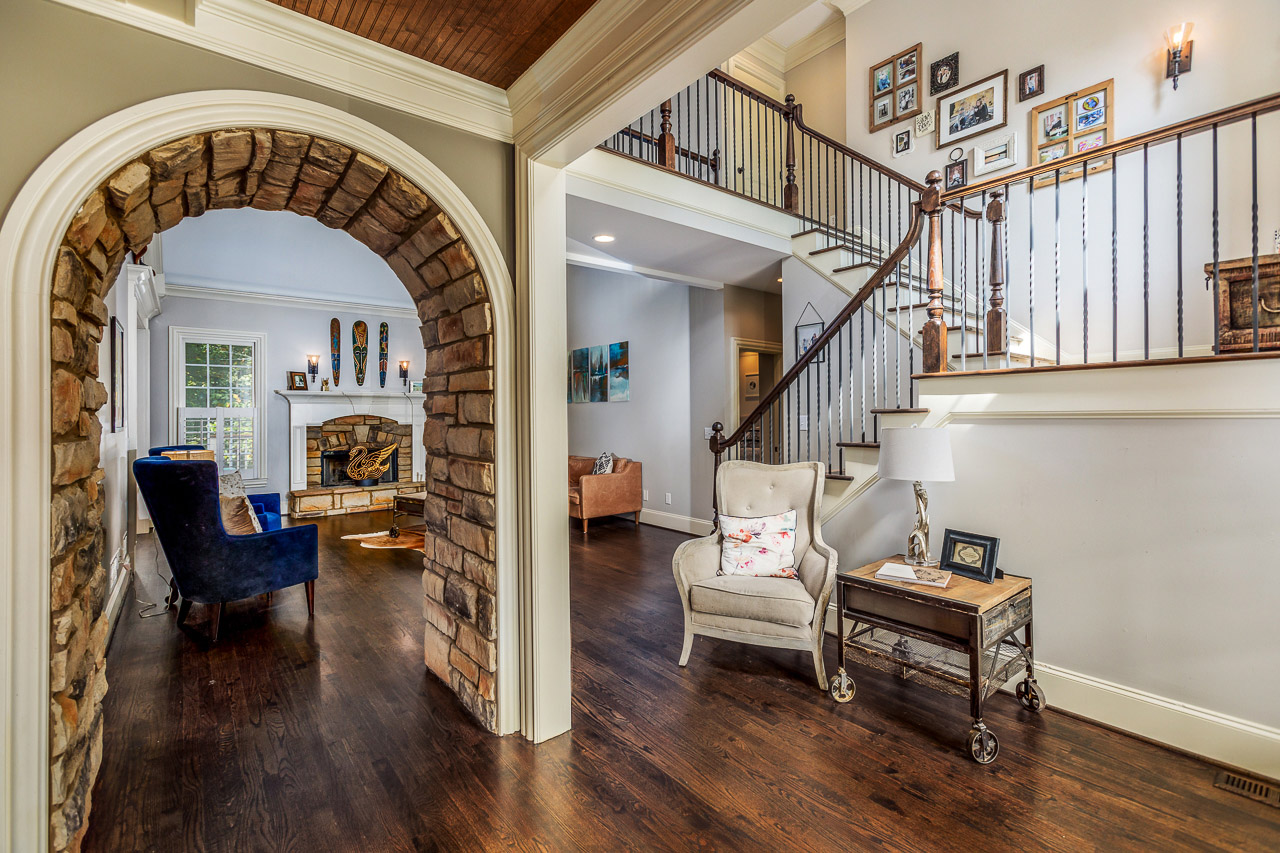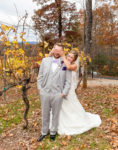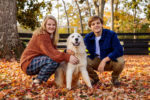How to Choose a Professional Real Estate Photographer for MLS Photos
In hot housing markets, it’s clear that a picture really IS worth a thousand words. Homes with quality photos are viewed more often and sell faster for higher prices than homes photographed by the homeowner or agent (unless they are a pro, of course!)
So if you’re ready to take your MLS listings to the next level, how do you choose a qualified professional real estate photographer? Read on for my tips & things to look for when making your decision…
How to Judge Real Estate Photos
Professional real estate photographers may utilize a variety of techniques, but there are certain standards that we strive for when delivering quality work. These are a few of the things to look for when you are reviewing a potential photographer’s website portfolio.
Verticals and Horizontals
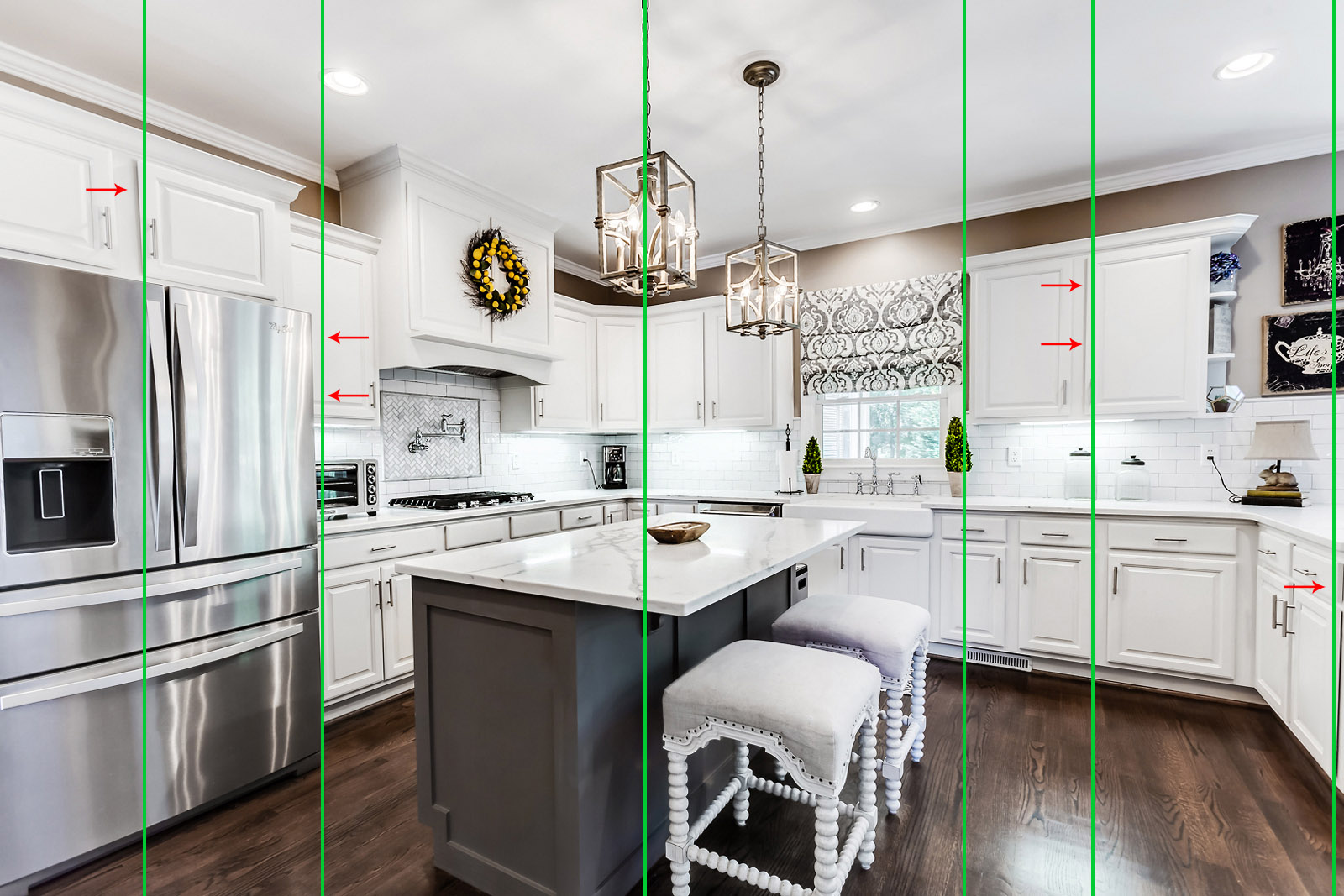
See how the room looks slightly “skewed” on the edges?
Walls, doors, and kitchen cabinets all have something in common… they all have perfectly straight lines. (Well, unless it’s an old home where absolutely nothing is straight anymore!) One of the hallmarks of a professional real estate/interior design/architecture photographer is that all of these lines remain straight in the photo. When shooting with a standard wide-angle lens to show as much of the room as possible, these lines may get distorted and will need to be corrected during editing. We also see this when photographing exteriors of homes on steep hills. Straight verticals and horizontals are the standard for professionals and should be required of your photographer, so if you see homes that are “falling” backwards or rooms that are skewed or not quite level, it’s a sign that the photographer may have less experience than others.
Window Details
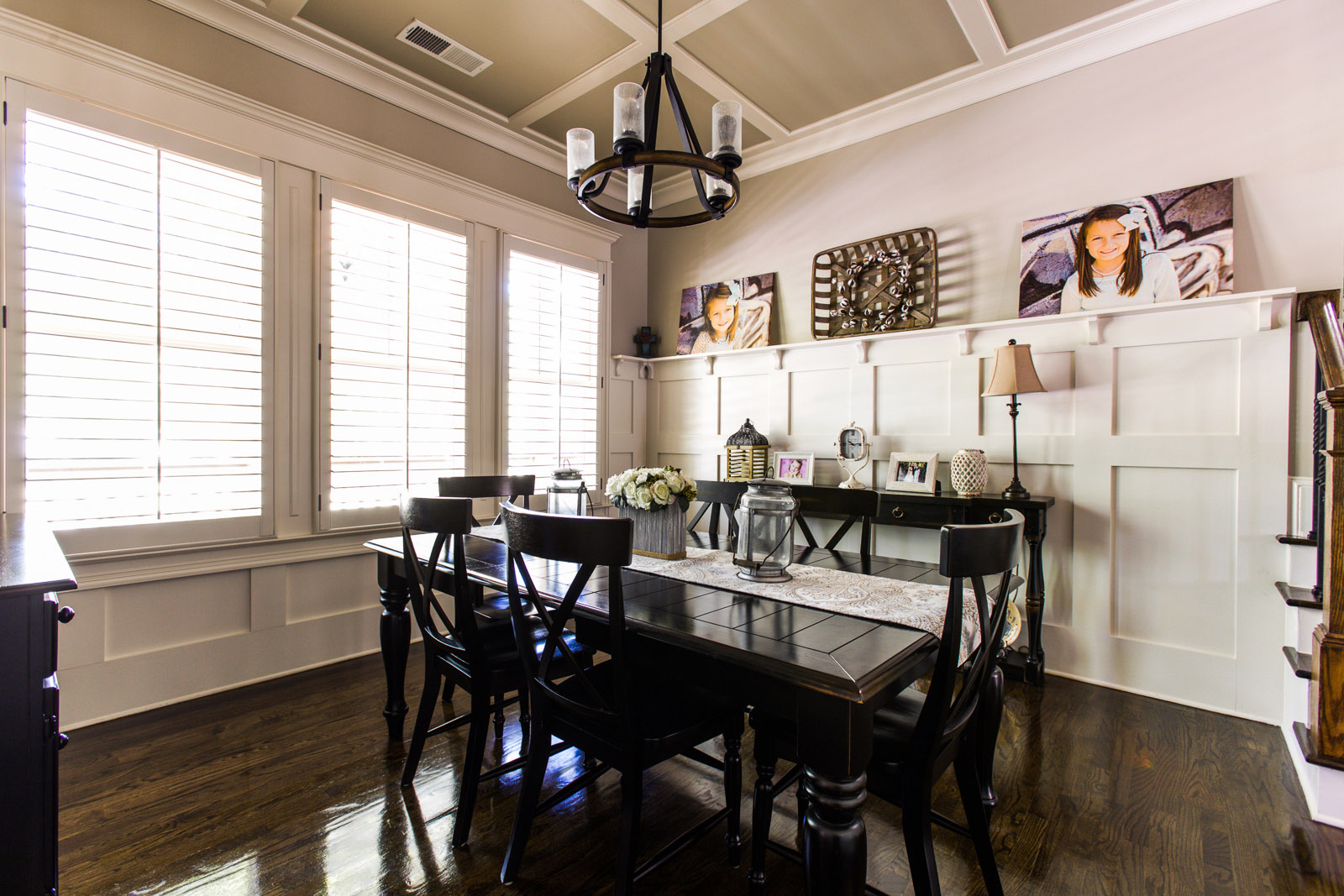
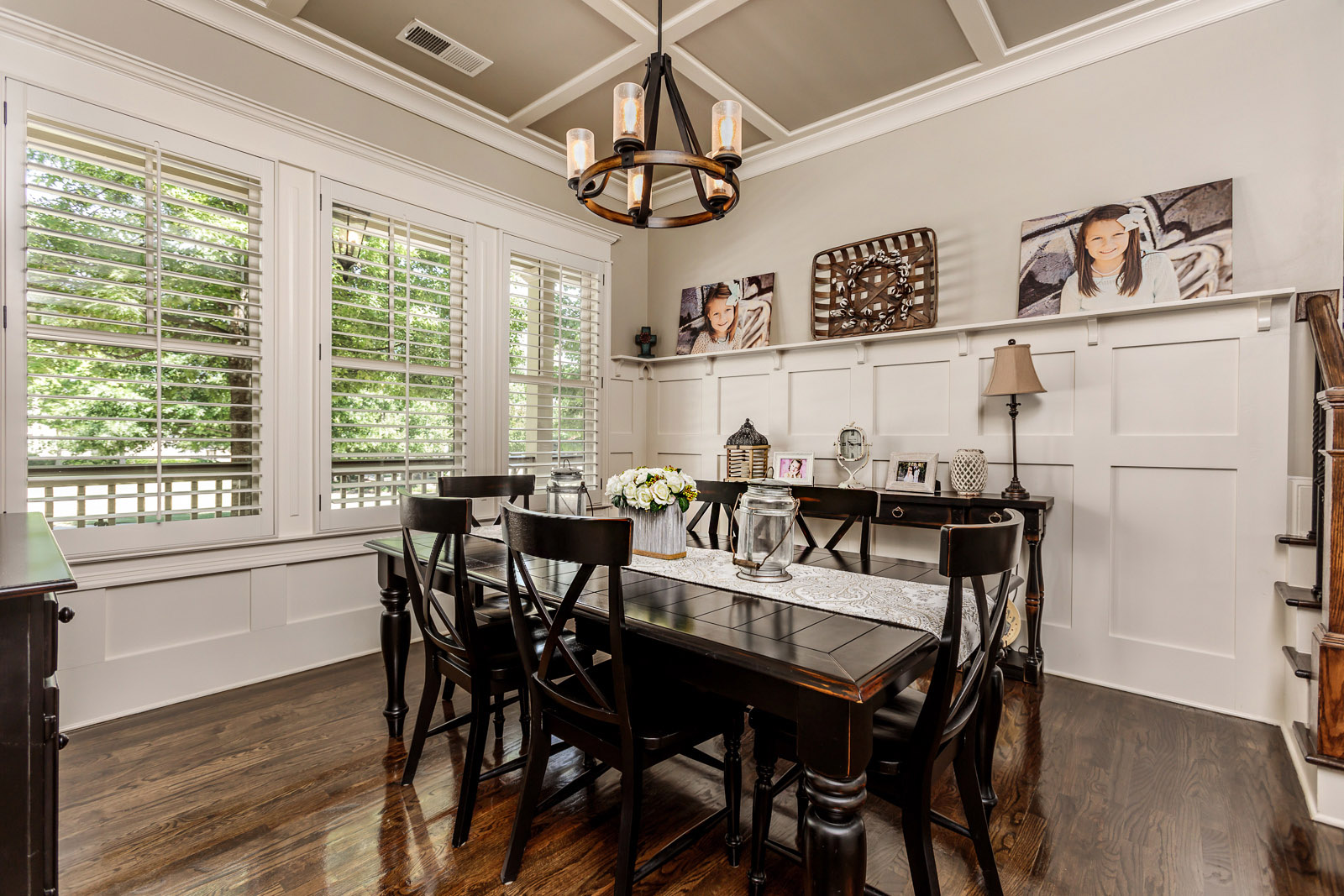
Your photographer should capture not only a beautiful scene inside the house but the beautiful scene outside the house as well. OK, not every property will have a million-dollar view, but it’s still nice to see a bit of green grass or trees & blue sky in the backyard. Cameras can’t register light quite as well as our eyes, so a less-experienced photographer may have images where the interior is nicely lit but the window detail has “blown out” and is solid white. Alternatively, perhaps the camera captured the view out of the window, but the room is dark by comparison. A professional photographer will ensure that you have both a beautifully-lit room AND a clear view out of the window.
Accurate Color
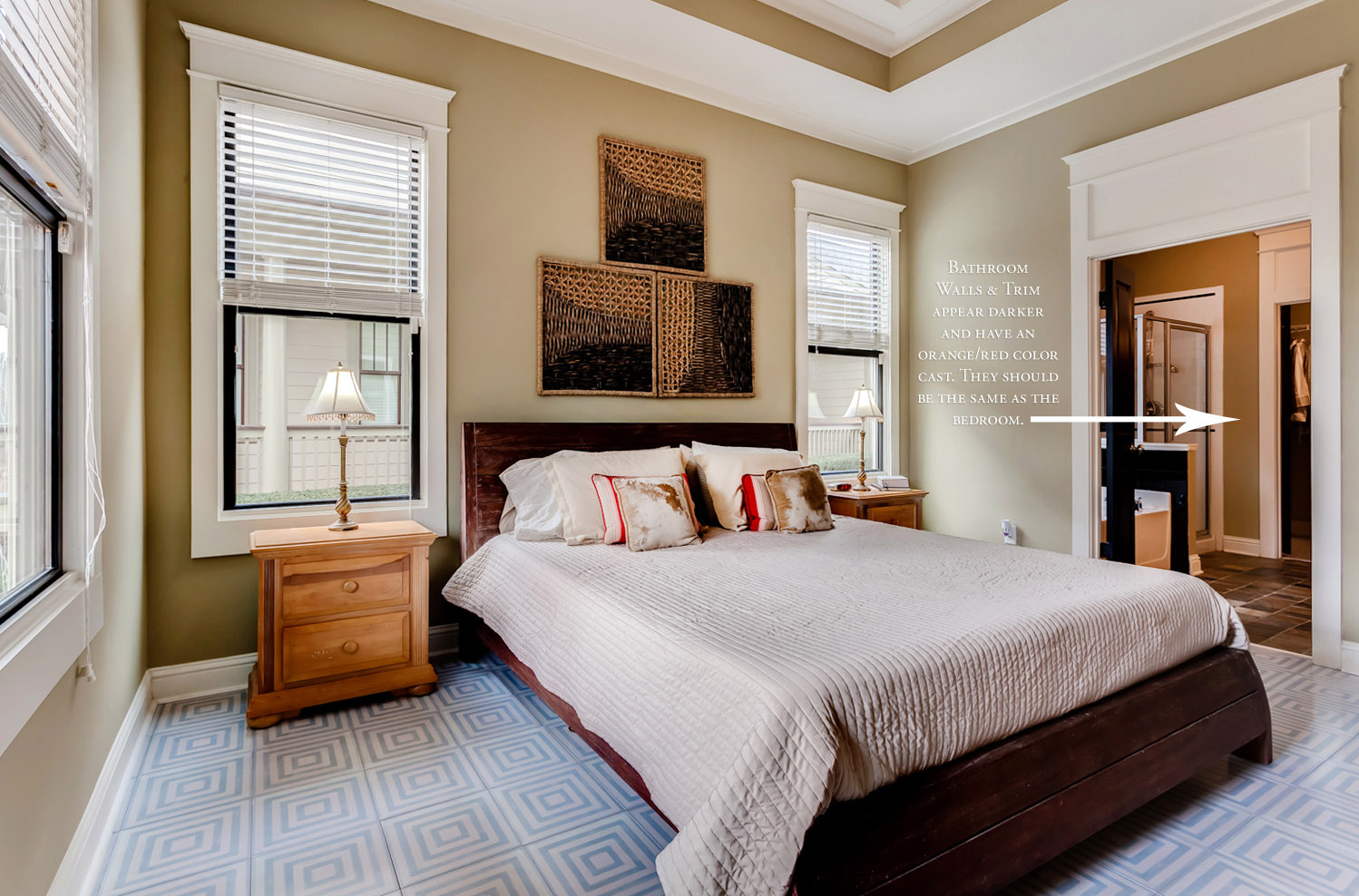
See the orange/red color cast in the bathroom?
The bathroom wall and trim color are actually the same as the bedroom.
Does that “greige” wall color look correct in the photos or is it too green-gray or too blue-gray? Maybe the light fixtures in the room have turned those lovely white cabinets a weird shade of orange. Accurate color is important in marketing a home, so your photographer should make sure it’s correct in your photos. This is usually most apparent when you can see into adjoining rooms or you have a mix of incandescent/fluorescent/led/daylight. When reviewing someone’s portfolio, ask yourself if the color looks right or if it’s a little “off” in places.
Clutter & Other Distracting Objects
While you shouldn’t expect your photographer to de-clutter or clean house during the photo shoot, there are a few things that professionals do to make sure the photos look their best. Toilet seats should always be put down, cords should be neatly tucked away or hidden, pillows fluffed, towels folded nicely, etc. Trash cans and pet food bowls may be moved if it’s possible for us to do easily. You should also NEVER see the photographer or any part of their camera equipment in your photos, so if you see the photographer peeking back at you in the bathroom mirror… move on to someone else!
Type of Lighting


There’s no real right or wrong type of lighting if you’re happy with a photographer’s style and end results. Some use daylight only (no lights on at all), some will use all available light (daylight plus interior lights), and some will blend some off-camera flash into their images. Some photographers will “blend” several images together to help retain those all-important window details. Generally speaking, daylight-only blended & “flambient” (that’s Flash + Ambient) blended images tend to give the most accurate color results with good tonal range and window details.
Location & Availability
In addition to the quality of their work, I highly recommend choosing a photographer who is located near most of your listings. Pricing may be cheaper since there’s less travel involved, and turnaround time may be faster as well if they aren’t spending hours driving all over town. I prefer to shoot listings within a 30-45 minute drive of my home in West Point, GA.
I also suggest looking for someone who does photography as their full-time job. If it’s a side gig, they may be at their day job during the best times of day for shooting, or they may not be available when you are. Don’t forget we need precious editing time to make your images look their best, so part-timers may rush the editing late at night or have slower turnaround times. I always schedule my shoots so that I can turn around images in 24 hours or less.
Other Tips & Things to Consider
Ask your photographer to recommend a good time of day for your shoot. They may ask which direction the house faces to avoid fully backlit front views.
If it’s raining, yes, it’ll look rainy in your photos. Overcast skies give nice, soft even lighting, but if you’re expecting sunshine & blue skies it might be best to reschedule.
Don’t assume the camera won’t see something. If you can see that orange extension cord running along the wall, so will the camera.
Know what your Usage Rights are and make sure you have an agreement in writing to avoid any possible copyright infringement. You can read more in my article about Copyright & Usage Rights.
Treat your photo shoot like a potential buyer viewing: Ensure the house is clean and de-cluttered, the lawn and landscape is tidy, and ask the homeowners (and pets) to leave so the photographer can work uninterrupted.

